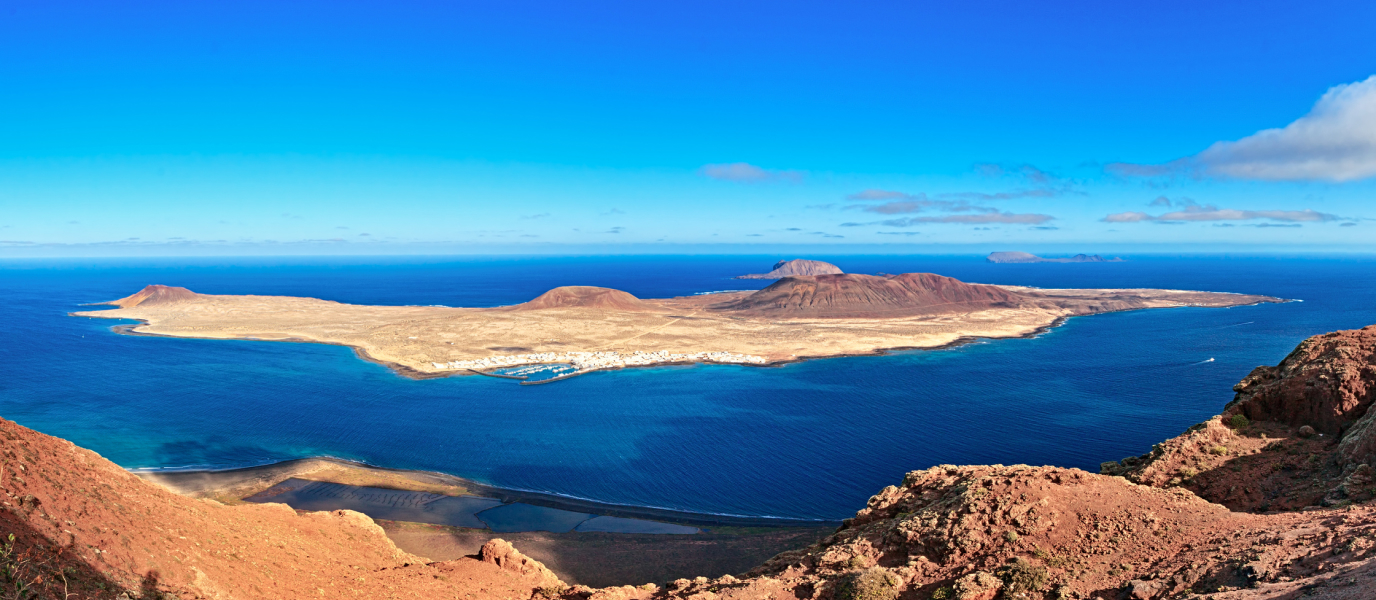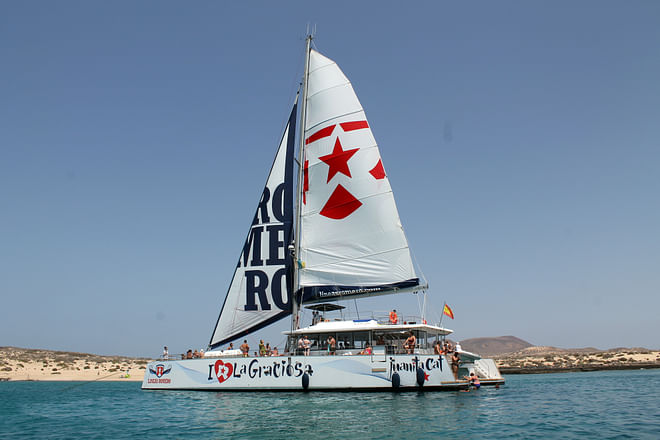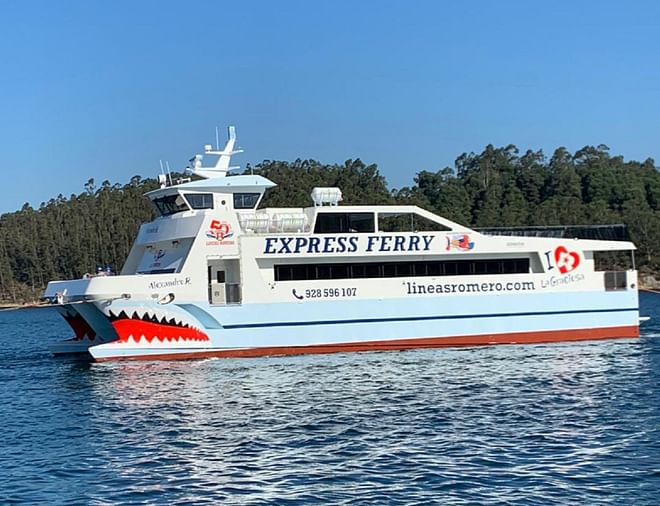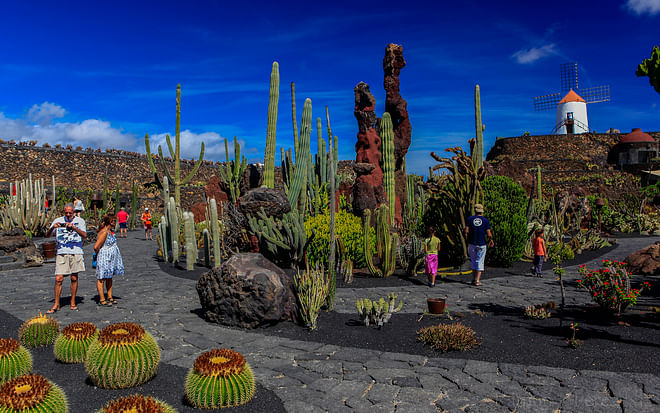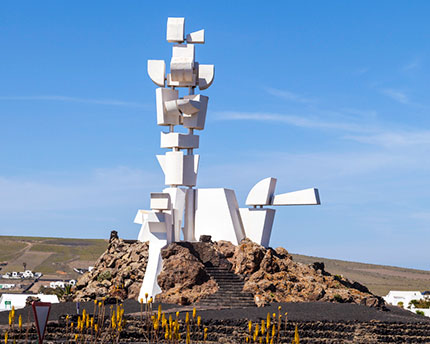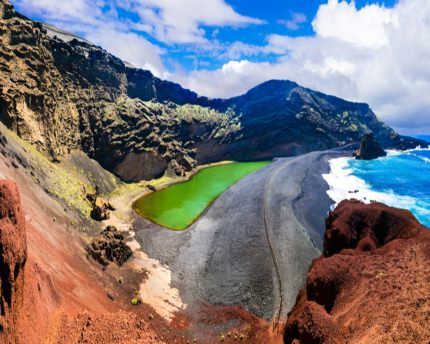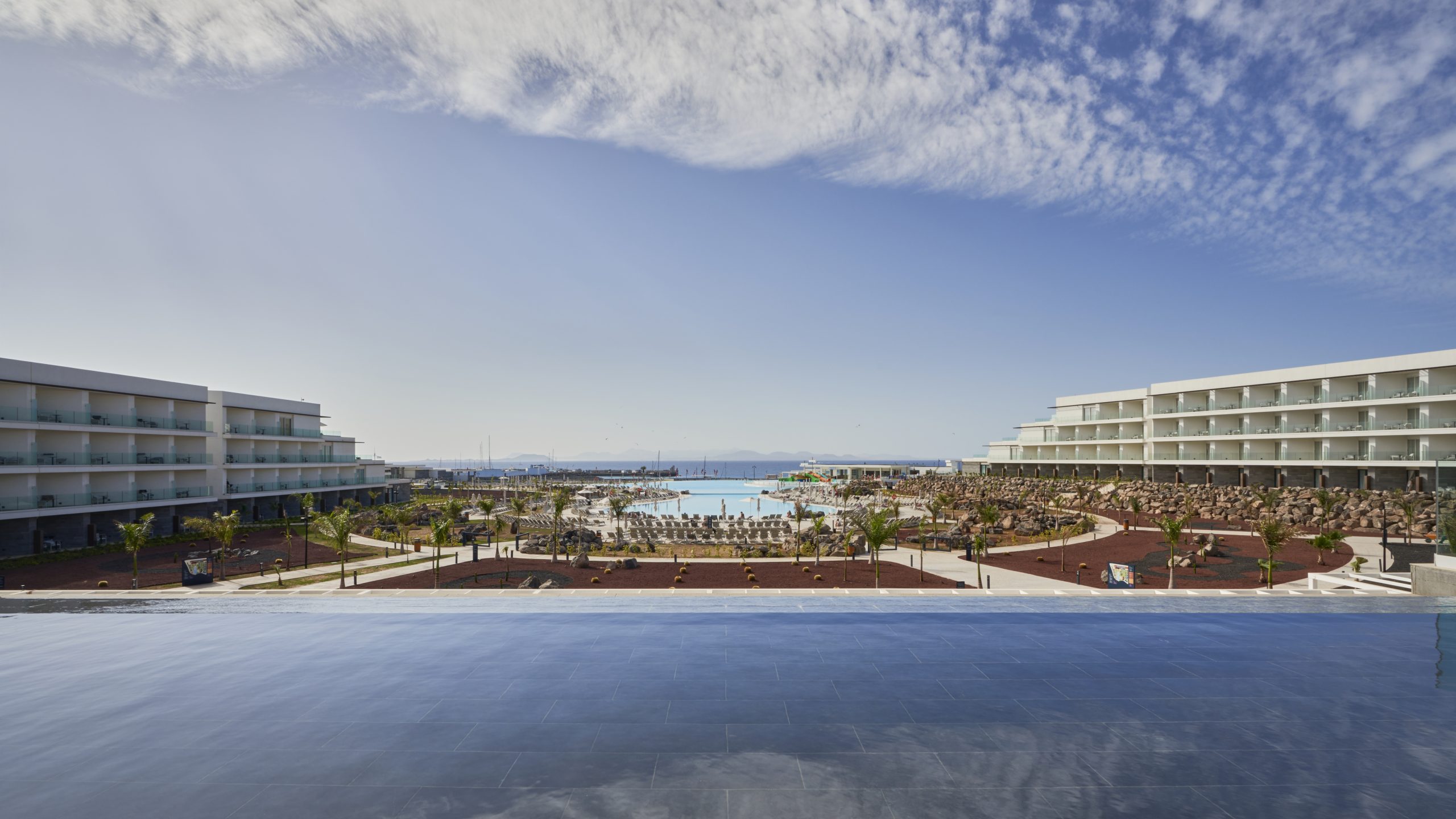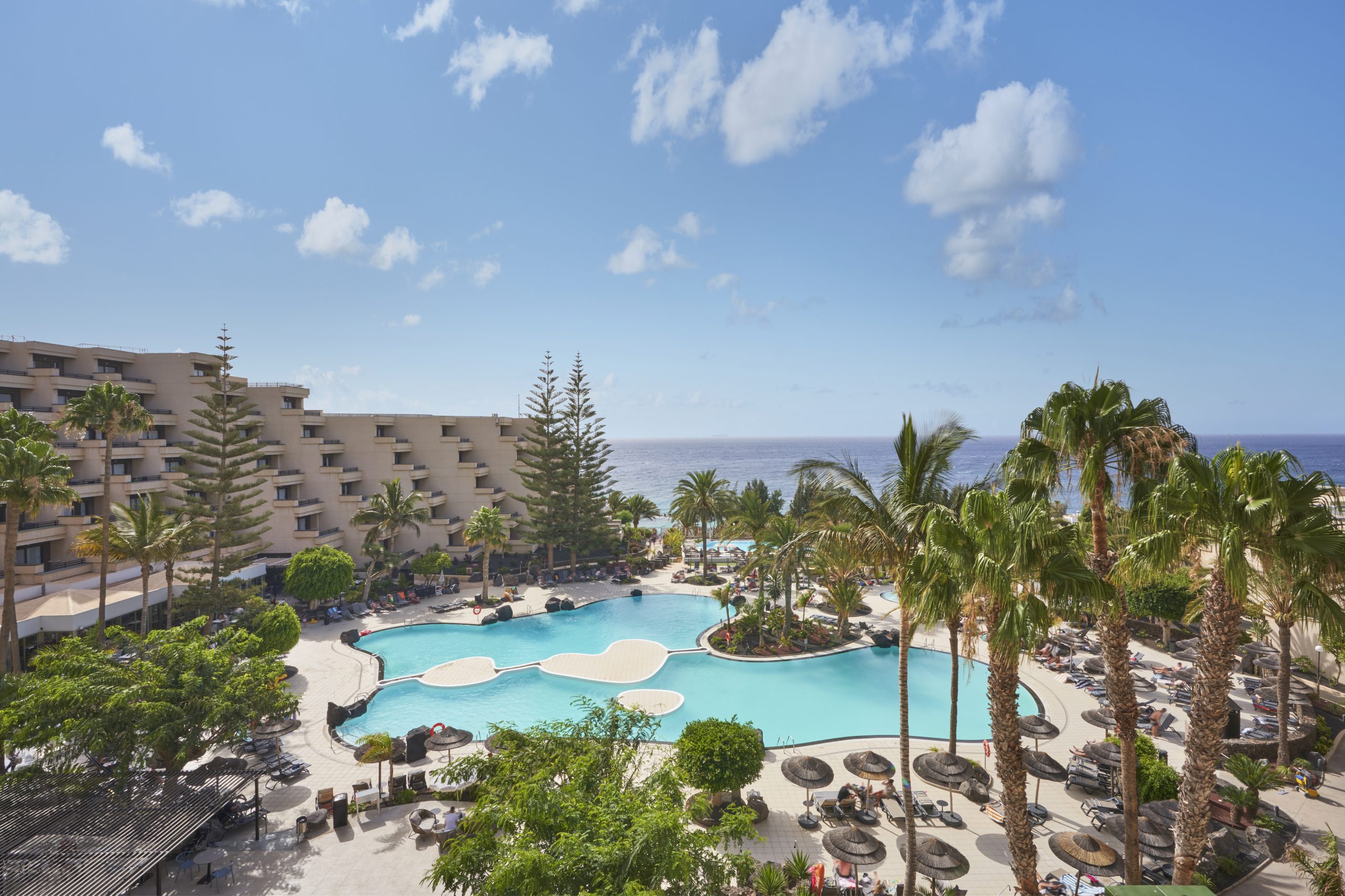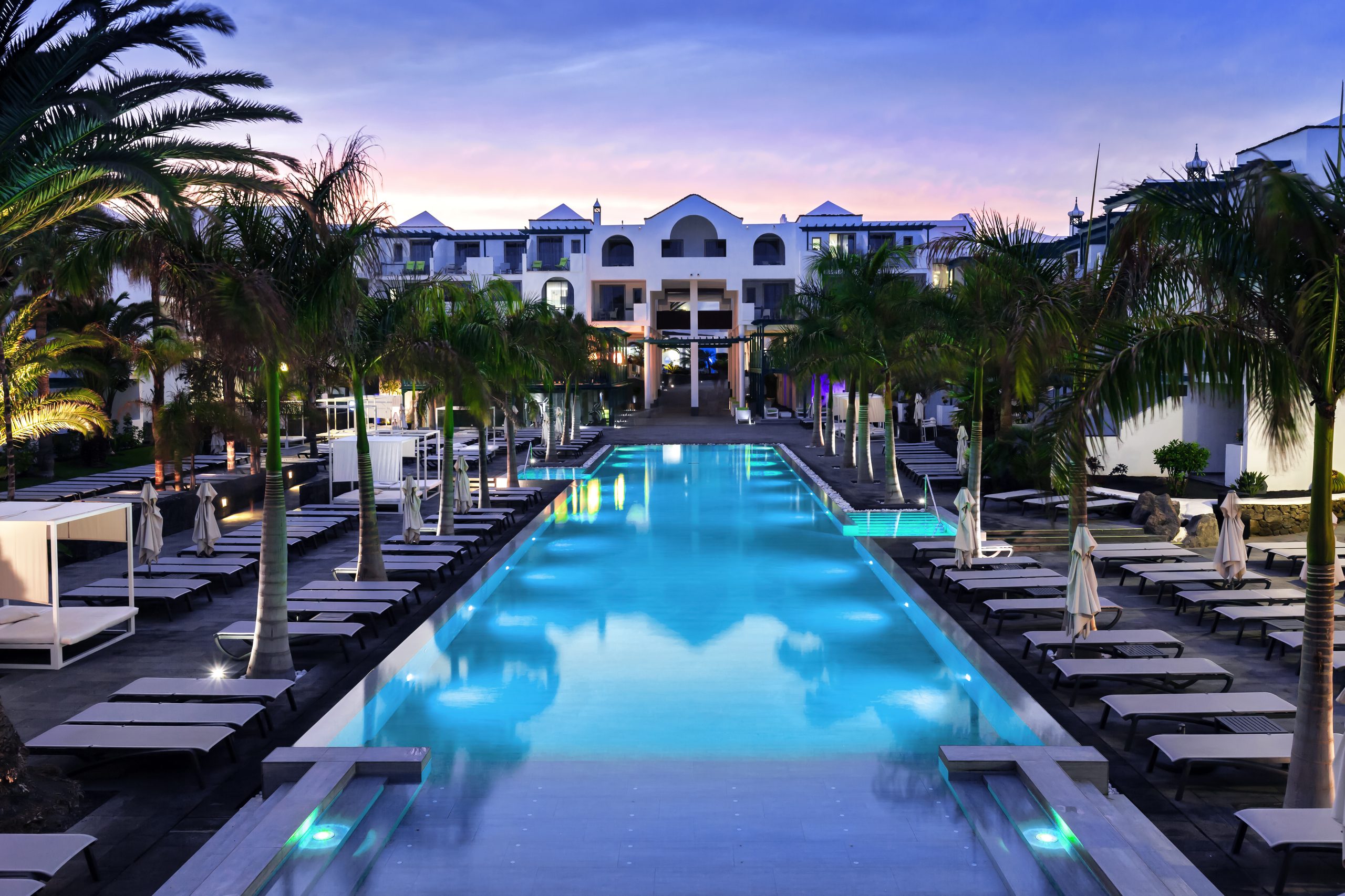Less than a half-hour’s trip by ferry from the north of Lanzarote lies humble La Graciosa, the eighth, and as yet undiscovered, Canary Island. Covering 29 km2, and with barely 700 inhabitants, the only inhabited island of the Chinijo Archipelago is one of the few remaining places in Europe yet to be tarmacked. To stroll along the sandy streets of Caleta de Sebo, its main centre of population, and the departure point for exploring the island’s deserted beaches and volcanic landscapes, is to walk into an otherworld removed from time and human preoccupations. Whether on foot or by bicycle, the island offers scores of paths where you can wander in the silence and beauty of its wild natural scenery.
Related experiences
How to get to la Graciosa: by ferry or on a private excursion
In spite of being a place untouched by mass tourism, La Graciosa is an earthly paradise easily accessible from northern Lanzarote. Ferries depart the port of Órzola every 30 minutes, complete the crossing in barely half an hour, and a return ticket costs €20. The boat leaves us at Caleta del Sebo, a town that boasts all the facilities, and where we can walk barefoot through its sandy streets.
Among the place’s attractions, it’s worth seeking out the diving centre, because one of La Graciosa’s most valuable treasures lies below the sea. The island is part of the Chinijo Archipelago Marine Reserve, the largest such reserve in Europe, which covers over 70,700 hectares and boasts the highest level of marine biodiversity in the Canary Islands.
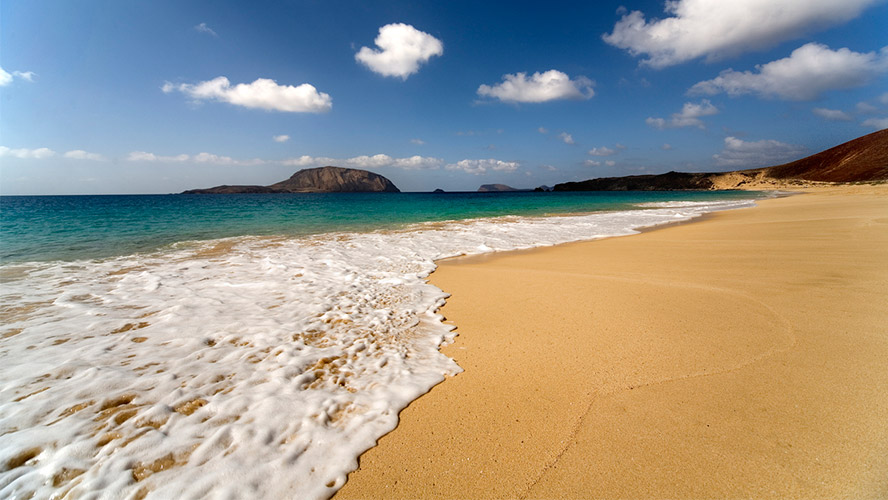
An alternative, especially if we only have one day available to visit the island, is to book one of the private catamaran or boat excursions available in the area. The tour, which takes about 10 hours, takes us around the amazing coasts of La Graciosa and the other uninhabited islands that make up the Chinijo Archipelago Marine Reserve, such as Alegranza and Montaña Clara, with stop-offs to allow us to enjoy their stunning beaches.
Trip to Montaña Amarilla and the southern beaches
From Caleta del Sebo, a trek of 4 kilometres along the coast (it is also possible to make the trip in a 4×4 taxi) brings us to the bleak but beautiful landscape of the south of La Graciosa. Here we find Montaña Amarilla, a former volcano, whose striking colour contrasts with the blue of the sky and the turquoise of the sea. According to legend, it was to the top of this mountain in the Islas Afortunadas (as the Canary Islands are popularly known) that the enchantress Armida brought the Crusader Reinaldo, with whom she had fallen in love. She kept him prisoner in a lush garden, guarded by a dragon, a lion and an enchanted fountain, whose water would make people laugh uncontrollably until they died. The story contrasts with the harsh reality of the peak.
The road ends at Playa de la Francesa, a spacious, white sandy beach which is generally quite crowded, as it attracts many of the boats that run excursions through the area. At the end of the beach, however, a narrow path leads us to an exquisite cove wedged into the very foot of Montaña Amarilla: the Playa de la Cocina.
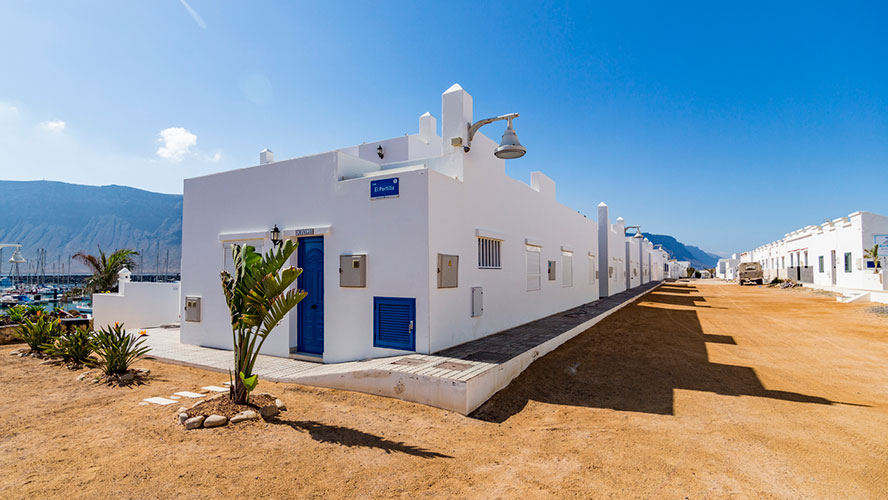
Cycling around the rugged beaches of the north
The best way to travel around the interior of the island is to cycle, and bicycles can be hired in Caleta del Sebo for less than €10 per day. From here we set out along generally well-signposted tracks towards the north of La Graciosa. After passing between the two main upland areas, the volcanic craters of Aguja Grande and Aguja Chica, we make our way towards the desolate Playa de Baja del Ganado on the northern coast. From this shore, where the sand mingles with the volcanic rock, we can enjoy a breathtaking view of the nearby island of Montaña Clara. Cycling a little further north, we come upon Playa de las Conchas, a vast, deserted sandbank flanked by strong ocean currents where it is easy to believe that you’ve been shipwrecked on a desert island.
Skirting the coast, we come face to face with one of the island of La Graciosa’s iconic sights: The Arcos de los Caletones—natural basalt arches formed by erosion from the sea that flows beneath. A little further on, we find Playa del Ámbar, similarly exposed to the Atlantic currents, and surrounded by sand dunes.
As we return towards Caleta del Sebo, we pass another rare spot on the island which has been touched by civilisation: the hamlet of Pedro Barba, a ghost town with a mere handful of white cottages for people in search of privacy and tranquillity.





























































